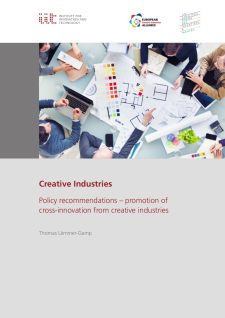
Creative industries have become a major focus of industrial policy throughout Europe. There are huge expectations put towards this industrial sector as it is expected to contribute to the industrial renewal of the European economy – “In the recent decades the world has been moving at a faster pace. For Europe and other parts of the world, the rapid roll-out of new technologies and increased globalisation has meant a striking shift away from traditional manufacturing towards services and innovation. Factory floors are progressively being replaced by creative communities whose raw material is their ability to imagine, create and innovate. […] If Europe wants to remain competitive in this changing global environment, it needs to put in place the right conditions for creativity and innovation to flourish in a new entrepreneurial culture. There is a lot of untapped potential in the cultural and creative industries to create growth and jobs." (European Commission, 2010: Green Paper – Unlocking the potential of cultural and creative industries, COM (2010) 183, p. 2). In this context the European Commission has launched the “European Creative Industries Alliance (ECIA)” in the autumn of 2011 to improve the integration of creative services, such as design, with traditional manufacturing sectors to add value and enhance the economic performance and robustness of European industry. Although there is agreement that collaboration between the creative industries and traditional industrial sectors results in cross-innovation of new products, services and processes, there is still no proper understanding of the mechanism behind.
Being a member of the European Creative Industry Alliance (ECIA) Samoa – société d’aménagement de la métropole ouest atlantique – Quartier de la Création à Nantes has requested the Institute for Innovation and Technology (iit) to shed more light on the mechanisms that promote cross-innovation. A particular emphasis will be put on the instruments that can be used by local and regional authorities to promote cross-innovation involving both creative industries and traditional industrial sectors. For this purpose the study presents policy recommendations that in a sense present the “perfect programme” which provide the framework for the development of a “stress test” for existing approaches in terms of whether they already live up to the characteristics of such a “perfect programme”.